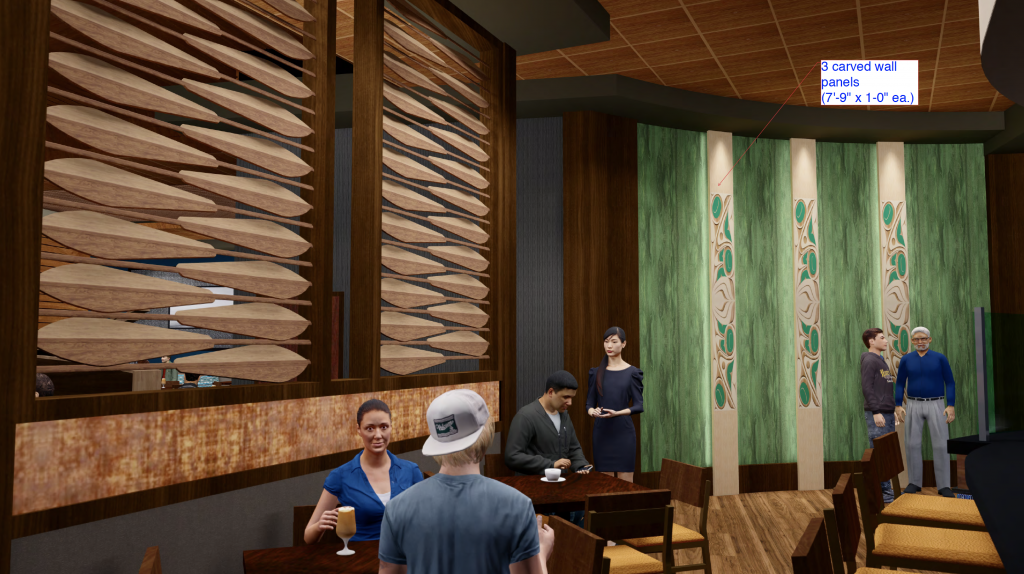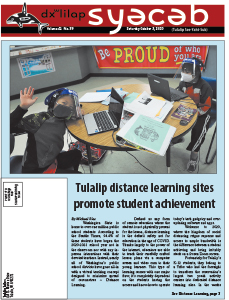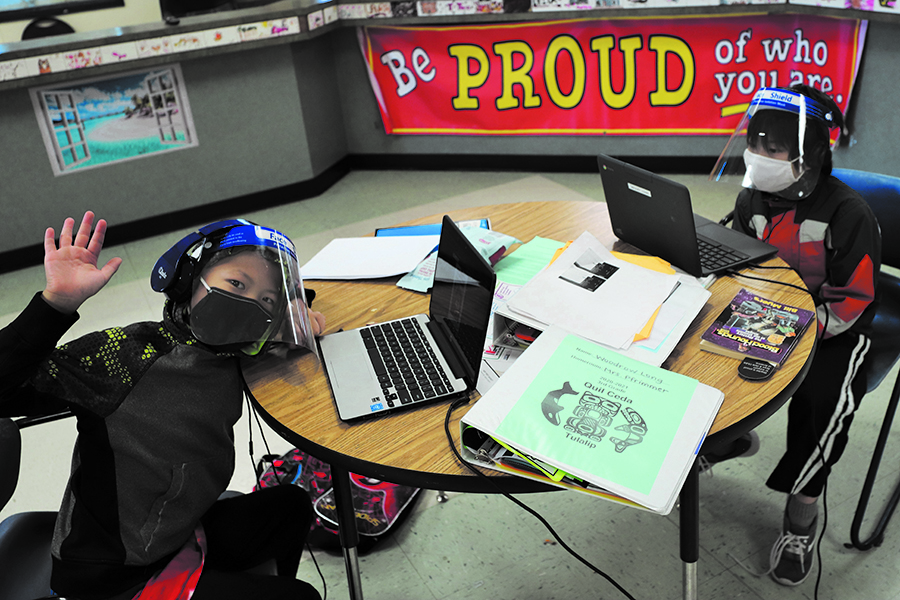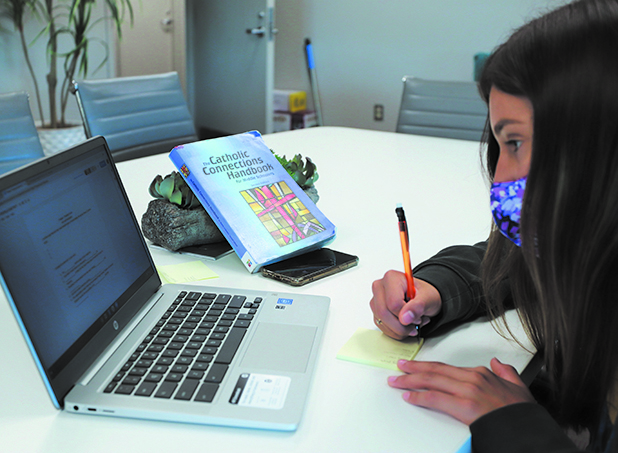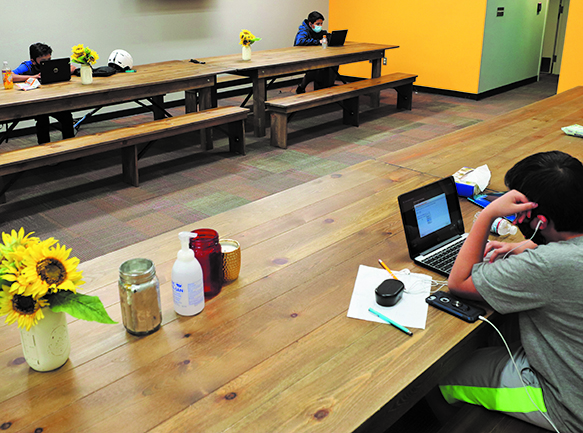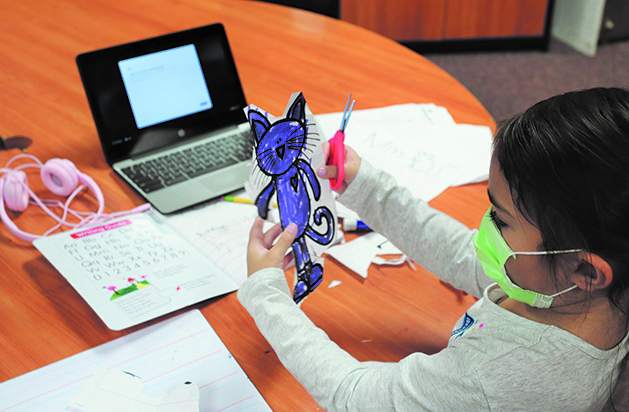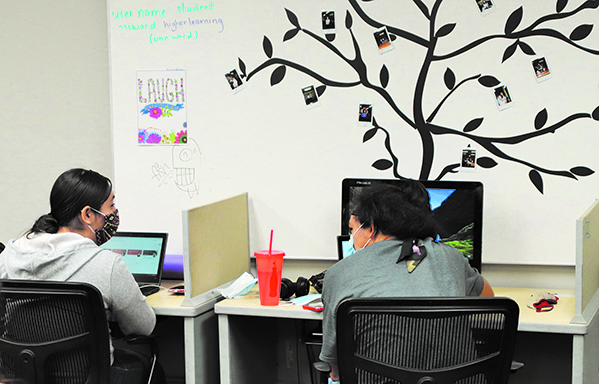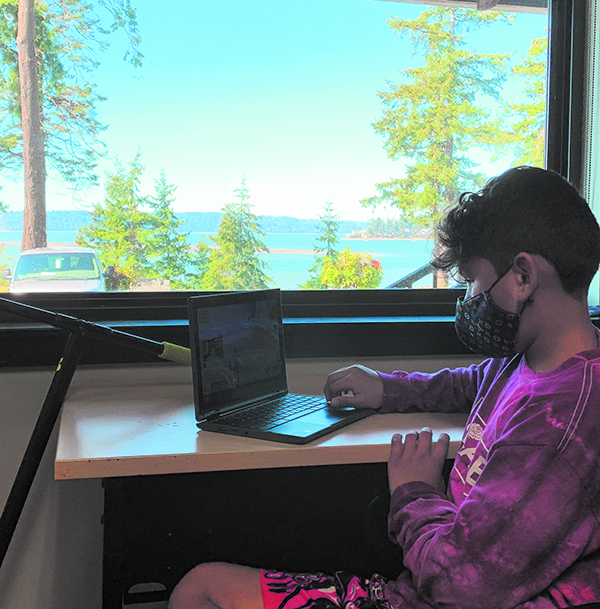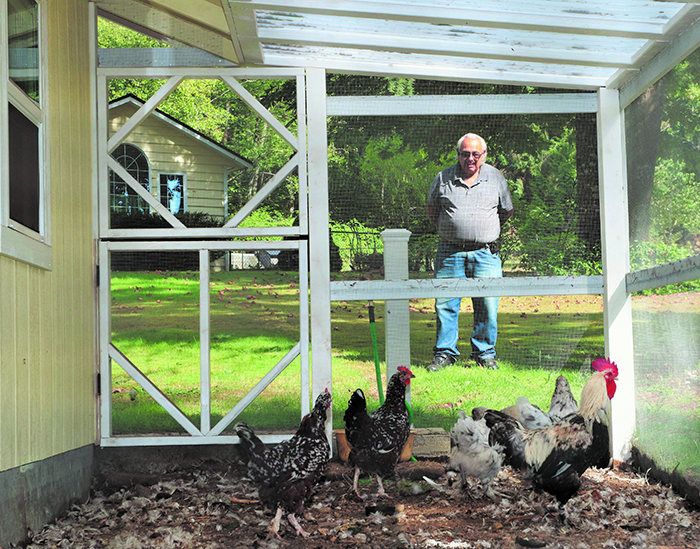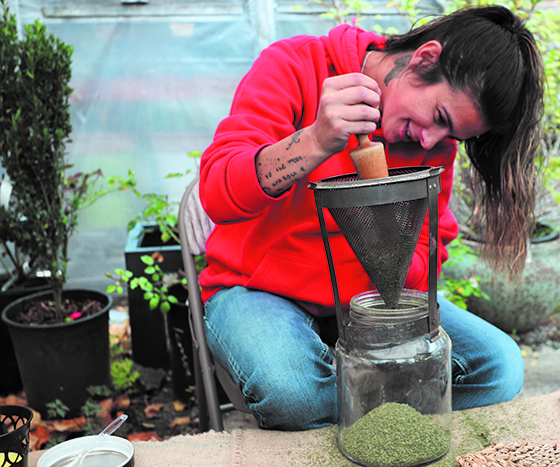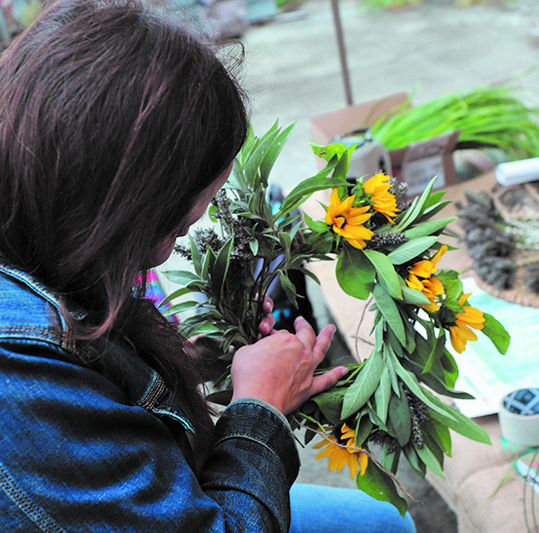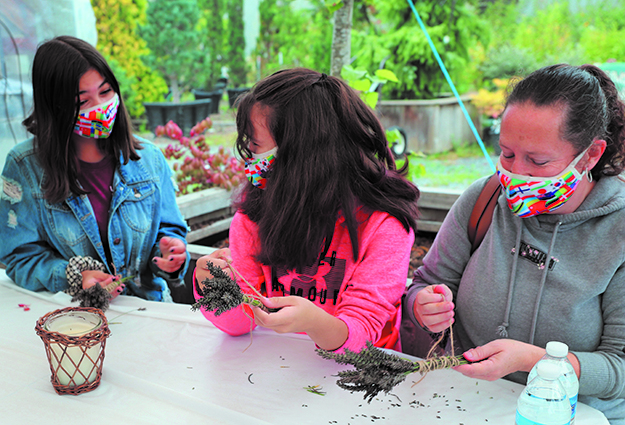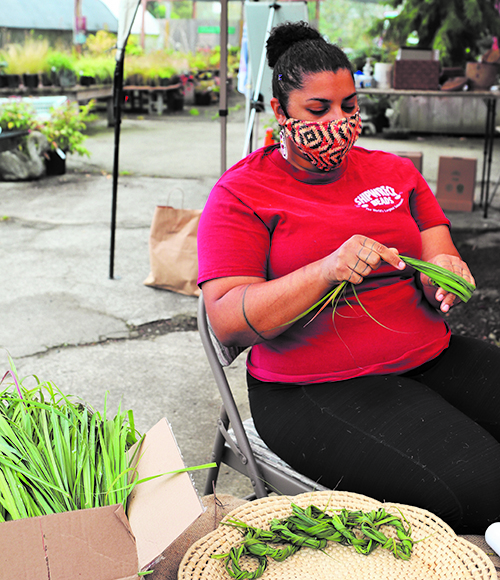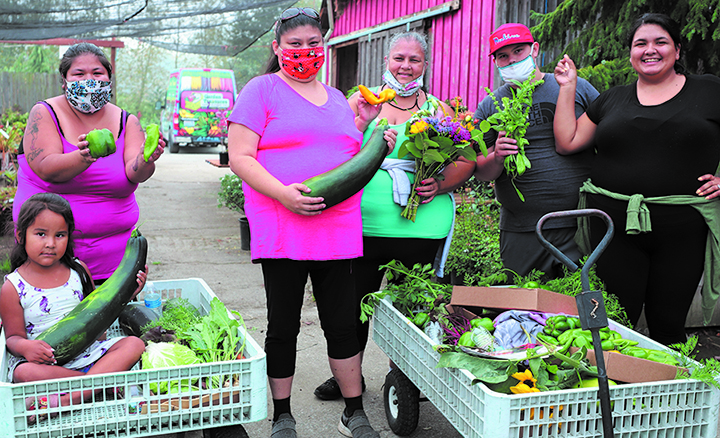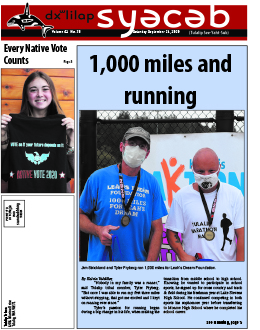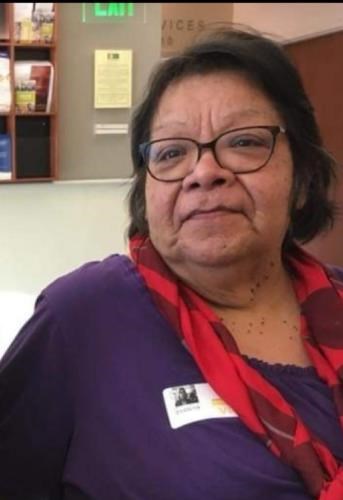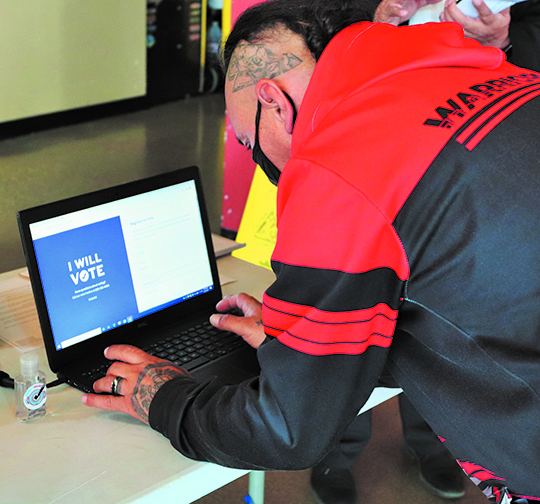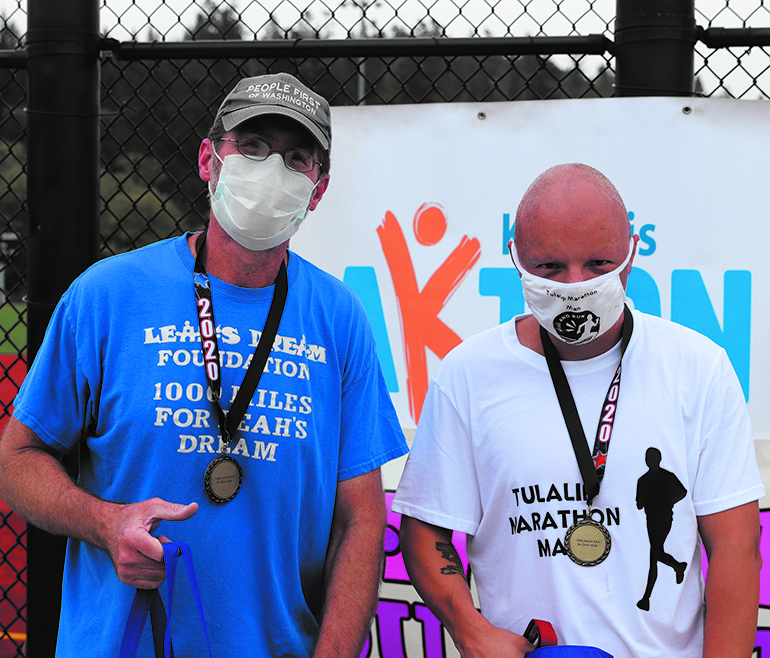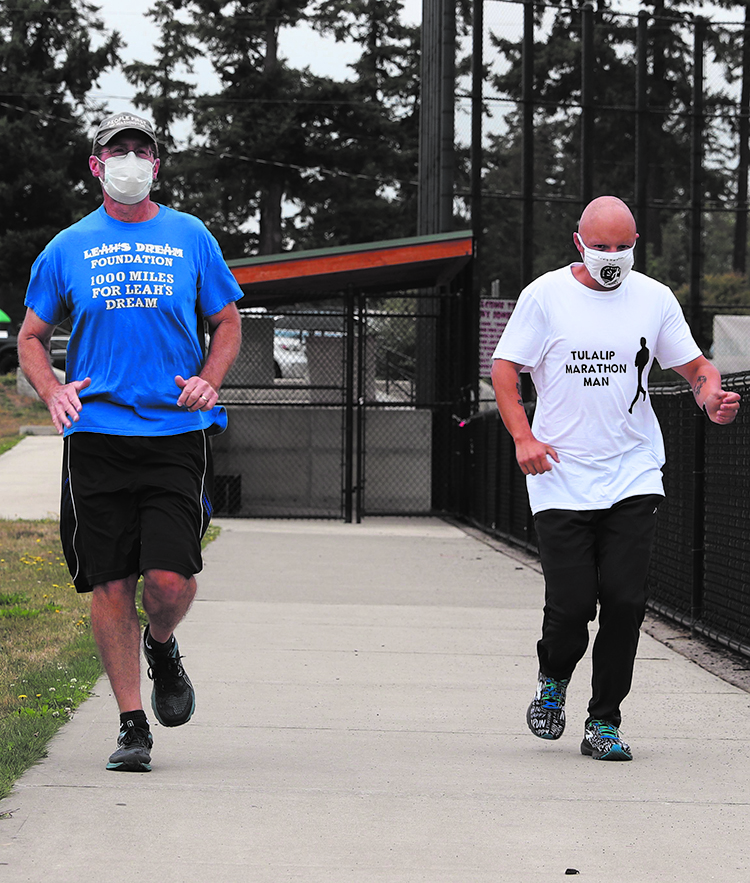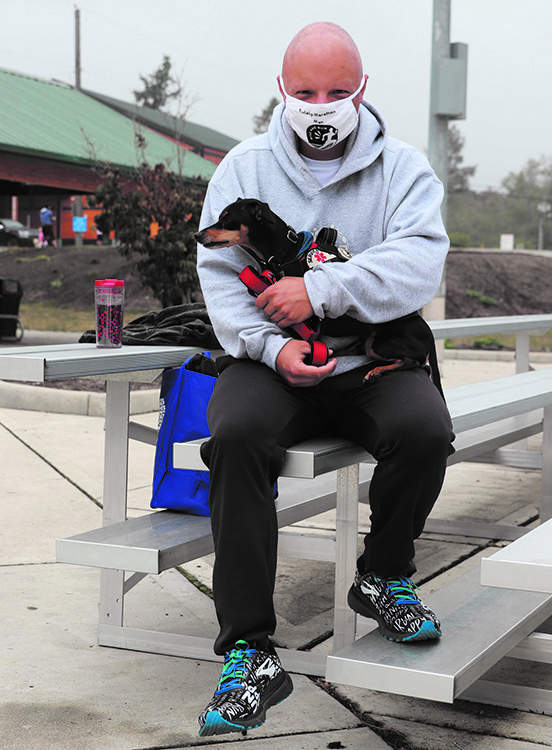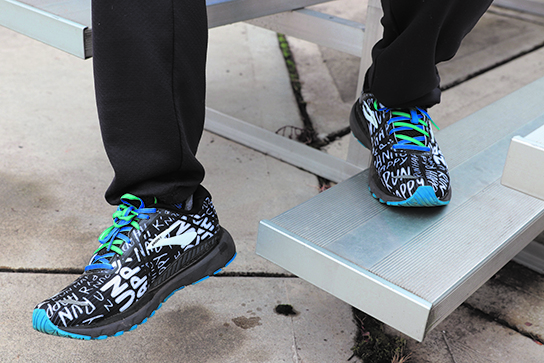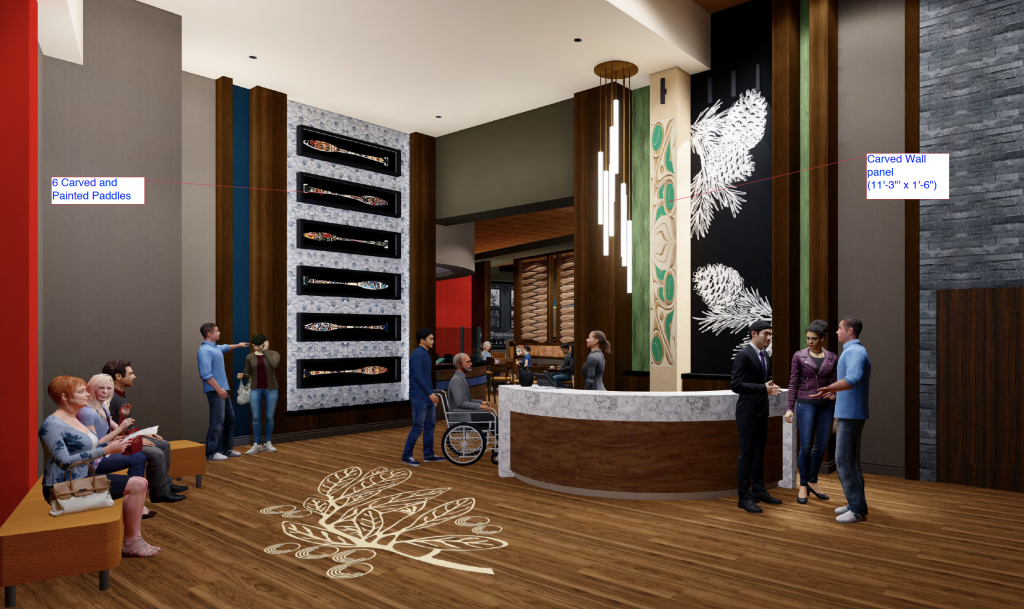
The Landing Restaurant at the new Quil Ceda Creek Casino October 2, 2020
1.0 Introduction:
The Quil Ceda Creek Casino (Owner) is soliciting request for proposals for artwork from enrolled Tulalip Tribes members for the design and production of artwork for ‘THE LANDING’ restaurant, which will be located within the new Quil Ceda Creek Casino. The casino is currently under construction with a scheduled opening date in early 2021.
The restaurant design is themed around the annual Pacific Northwest Tribal Canoe Journey specifically focused on ‘The Landing’ and the hospitality provided at each stop along the journey. The purpose of this request, is to seek proposals for custom designed artwork that will advance the story of “THE LANDING”.
The following is a narrative description of “THE LANDING”. This narrative will be printed on the restaurant menus.
The annual Tribal Canoe Journey is an ancestral summer tradition bringing together the people of the Pacific Northwest Tribes to celebrate the connection to salmon, water and each other. Canoes leave from their homeland and travel to the host tribe for a week of festivities. Depending on where the canoes are launched, the Canoe Journey can take up to three weeks of paddling through open waters.
As the canoes travel to the host tribe, the canoe families paddle for an average of eight hours a day and take breaks on beaches or supporting boats. At night, the canoe families stop at a designated tribal location to eat and rest. When conditions are optimal and the tide is just right, the canoes set out again until they reach the host location.
The host tribe formally grants the visiting canoes permission to come ashore (“The Landing”). Throughout the weeklong celebration and potlatch, the visiting tribes are fed, provided with a comfortable place to rest, and share songs, dances and stories of their travels through the open waters of the Salish Sea, Pacific Ocean, Strait of Juan de Fuca and the Puget Sound.
Like many traditions, the Canoe Journey was lost until the Maritime Committee of the Washington State Centennial Commission developed the Native American Canoe Project in 1987. The first step in reviving the tradition was to find suitable old-growth cedars of sufficient length and diameter, plus locating knowledgeable craftsmen to carve the canoes for the journey.
Seventeen Puget Sound tribes participated in the inaugural 1989 Paddle to Seattle Canoe Journey. Since then, the annual event has expanded to include more than a hundred tribes and First Nations from Western Washington, British Columbia and Alaska, but also from as far away as Hawaii and New Zealand.
As part of this tradition, we welcome you, our valued guest, at “The Landing.” Rest, eat and share stories of your adventures. We raise our hands to you in the traditional Tulalip greeting: a warm expression of welcome and friendship, harmony and hospitality. It is a greeting that says you are our guest, you are under our roof, and you are part of our family. Welcome!
2.0 Artwork:
The Owner has identified ten (10) individual pieces of carved artwork to be located within the restaurant. While the final design of each piece will be created by the selected artists, the location and size of each piece is shown in the conceptual architectural renderings included in Exhibit 1 and as noted below. The cedar will be provided by the Owner, but selected with the guidance of the chosen artist(s) to provide consistency in materials between the various art pieces. Paddle blanks for the paddles will be provided by the Owner to the Artist. All artwork is to be considered art gallery or museum quality. The building contractor will mount the artwork to the building or within casework under the direction of the artist and Owner. The artwork to be provided includes the following:
Carved Artwork
6 carved and painted cedar wood paddles (traditional sized paddles of approximately 57 inches in length to fit within a 6 ft. – 1/2 in. x 1 ft. – 6 in. lighted enclosure) The paddles shall include carved and painted images on one side of the paddle. The Owner is open to the carved paddles being provided by one or more artists under one proposal. If a proposal includes multiple artists, each artist shall be identified and images of their work shall be included within the submittal with the scope of work for each artist clearly identified in the proposal. A proposal that includes a team of artists shall also include how they plan to work together to create a unified design and message that brings life to the meaning of “The Landing”.
3 carved cedar wood panels: 7’-9” x 1’-0” each (the depth is anticipated to be approximately 2 – 4 inches. The final depth will be determined by the selected artist(s) and the Owner) It is anticipated that these will not be painted pieces, but the Owner is open to collaborating with the artist(s) to determine the finished condition based on the artist’s
design and recommendation. Consideration of the finish will include that these pieces are exposed and open to guests being able to touch the carved panels.
1 carved cedar wood panel: 11’-3” x 1’-6” (the depth is anticipated to be between 2 – 4 inches. The final depth will be determined by the selected artist(s) and the Owner) It is anticipated that this will not be a painted piece, but the Owner is open to collaborating with the artist to determine the finished condition based on the artist’s design and recommendation. Consideration of the finish will include that this piece is exposed and open to guests being able to touch the carved panel.
The Owner intends that all carved panels shall be consistent in size, material, and general design so that they create a consistent look and feel that jointly tell the story of ‘The Landing’. Each carved panel shall be a separate design. The Owner is open to the carved panels being provided by one or more artists under one proposal. If a proposal includes multiple artists, each artist shall be identified and images of their work shall be included within the submittal with the scope of work for each artist clearly identified in the proposal. A proposal that includes a team of artists shall also include how they plan to work together to create a unified design and message that brings life to the meaning of “The Landing”.
3.0 Pre-qualification Criteria for Submission:
- Artist must be an enrolled Tulalip Tribal member
- Must be a minimum of 18 years old
- Must have the ability to meet the specified timeframe
- Must have completed work of a similar quality and the type of artwork required
- Artwork must be Pacific Northwest Coast Salish design
4.0 Form of Proposal
- Cover letter identifying the Proposer, background and experience related to this submission.
- Identify which piece or pieces of art the Proposer is interested in providing
- Describe experience with similar projects involving creating custom art pieces for display purposes. Include up to 10 digital images of similar artwork completed by the Proposer, but no less than 5 images.
- Include a minimum 250 word written narrative describing what each art piece being designed will represent and how the design will advance the story of ‘The Landing’
- Include a statement that the Proposer is willing to agree to the following conditions:
- The Artist(s) agree that upon completion, delivery and payment for the Artwork, all copyright and reproduction rights shall pass to the Owner. The Owner shall have the right to duplicate the artwork and control all usage of the design. The Artwork may be photographed, sketched, painted, copied, or reproduce in any manner whatsoever by the Owner their agents or assigns and for whatever use without the express, written consent of the Artist.
- While the Owner intents to display the Artwork within the new Quil Ceda Creek Casino, the Owner makes no promises that the artwork will be displayed, or that the Owner will display the art in a specific manner, area or location
- The name of the artist will be displayed
- The Owner shall have the right to sell, give away or donate the artwork without compensation to the artist.
5.0 Timeline:
- Issue Request for Proposals: October 2, 2020
- Response due date: October 16, 2020
- Complete proposal reviews, interviews (if required) and artist selection: October21, 2020
- Contract execution: October 23, 2020
- Artwork design approval: November 18, 2020
- The artist shall provide weekly review meetings on design progress to obtain Owner input during the design process
- Artwork shall be complete and delivered to the new Quil Ceda Creek Casino project site: December 18, 2020
- The artist shall provide weekly status updates to the Owner on progress. The Owner may visit the artist to review progress as deemed necessary
- Artwork Installation: December 22, 2020
6.0 Selection Process & Notification:
- All complete submittals received by the submittal time and date will be considered by the selection committee. Submissions will be evaluated on the following criteria:
- Artistic quality;
- Cultural relevance/concept;
- Uniqueness and originality;
- Professional quality;
- Examples of past artwork that fit the current criteria;
- Shown ability to meet the schedule
7.0 Compensation
- Carved and painted wood paddles: $2,500 each
- Carved cedar wood panels (7’-9” x 1’-0”): $5,000 for each piece
- Carved cedar wood panel (11’-3” x 1’-6”): $7,000
- The Owner will pay the artist(s) within 10 days after the art has been accepted by the Owner as meeting the requirements of the project and it has been delivered to the project site.
- The Owner reserves the right to review the work before payment to the artist and if it’s not to the satisfaction of the Owner, the artist shall agree to work with the Owner until the Owner is satisfied. This could include re-doing the work.
8.0 Acceptance or Rejection of Proposal
The Owner reserves the right to reject any and/or all Proposals. Owner also reserves the right to waive any information and technicalities. The Contract(s) will be awarded to the artist(s) that the Owner believes to be in the best interest of the Project. Each Proposer is responsible for all their own costs associated with responding to this RFP and any expenses incurred by the Proposer in the selection process.
9.0 Proposals & Submittal Schedule
Proposals must be received by 2:30 PM on October 16, 2020. Proposals received after the time and date stated will not be accepted.
Proposals shall be submitted in an 11 x 17 sealed envelope and clearly labeled and addressed as follows.
Request for Proposals:
Quil Ceda Creek Casino – Artwork Address:
Quil Ceda Creek Casino
Attention: Alicia Watson-Jones
6410 33rd Ave. NE
Tulalip, WA 98271 Proposals shall include 3 hard copies Proposals will be opened privately
Proposers may be asked to participate in a personal interview with members of the selection committee if the selection committee deems necessary.
Owner intends to make final selections by October 21, 2020 and to immediately enter into contracts with the artist(s) the Owner believes is in the best interest of the project. All Proposers will be notified of the artist(s) selected to complete the work.
10.0 Questions
All questions shall be directed to Eric Guion, Owner’s Representative for Tulalip Tribes Quil Ceda Creek Casino. All questions must be delivered by electronic mail (email). Questions will be received up to 5 days prior to the Proposal submittal date.
Contact Information Eric Guion
Email: Eguion07@gmail.com
Phone: 206-910-1089
11.0 Jurisdiction
The Laws of the Tulalip Tribes shall govern
12.0 Non-Collusive Understanding
Each person and/or firm submitting a proposal thereby certifies that they have not colluded with any other person, firm or corporation in regards to securing or providing the artwork being solicited.
Confidentiality, Non-Disclosure & Ownership of Documents
All materials provided by the Owner to the Proposer are considered confidential information and shall remain the property of the Owner. The Proposer shall keep in confidence and shall not distribute, disclose, disseminate, or use, for its own benefit or for the benefit of others, in any manner or form, any confidential information received from the Owner, unless and to the extent specifically authorized in writing by the Owner. The Proposer shall use its best efforts to protect and guard the confidential information from disclosure and/or use by any person in violation of this Agreement.
Submitted proposals shall become the property of the Owner, for historical reference only. Proposers are advised to make copies of their work since the proposal will not be returned unless specific materials are identified by the Proposer. Materials the Proposer would like to have returned must be identified in the submittal package. The Owner takes no responsibility for the loss of any submitted materials.


